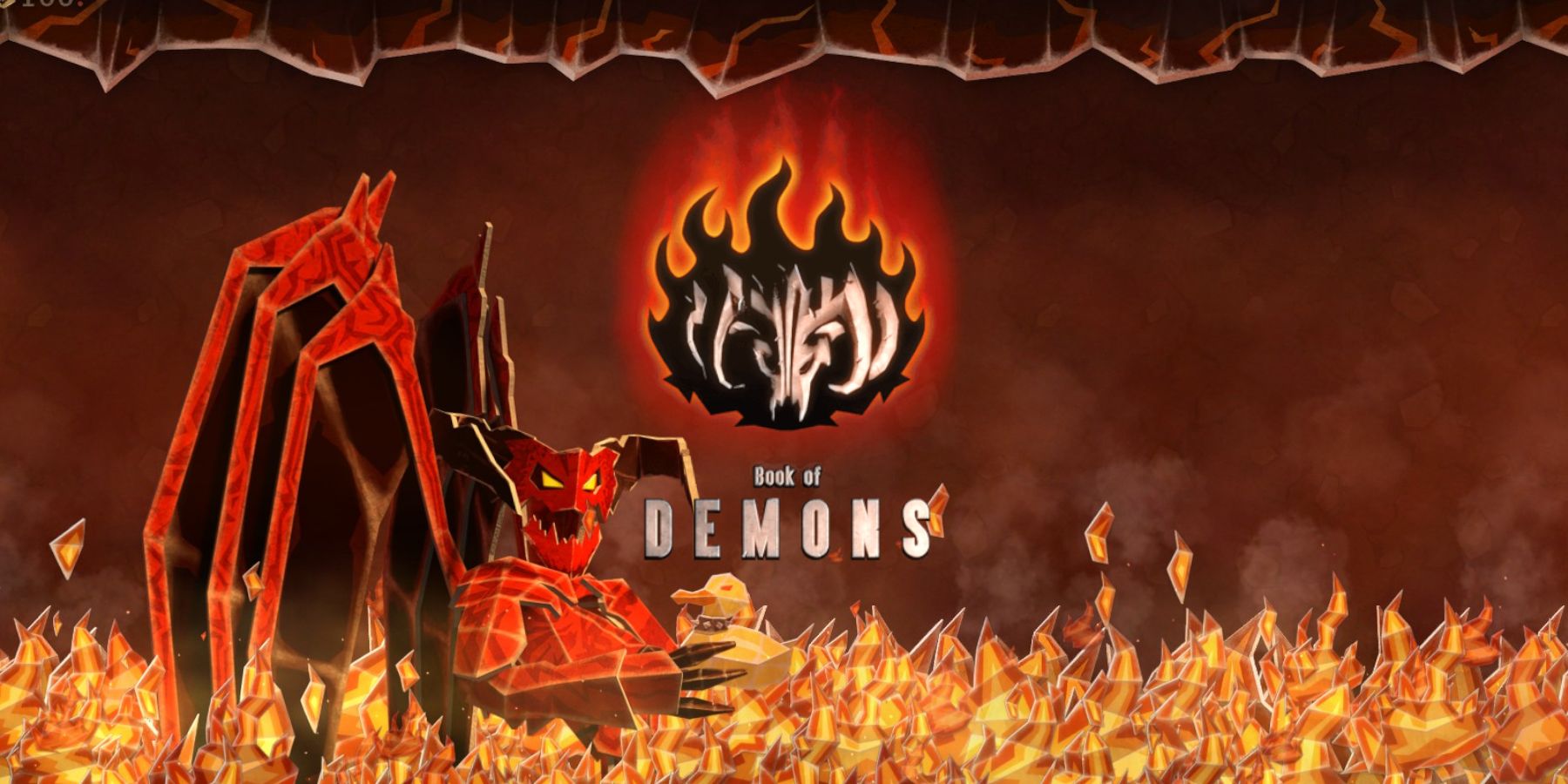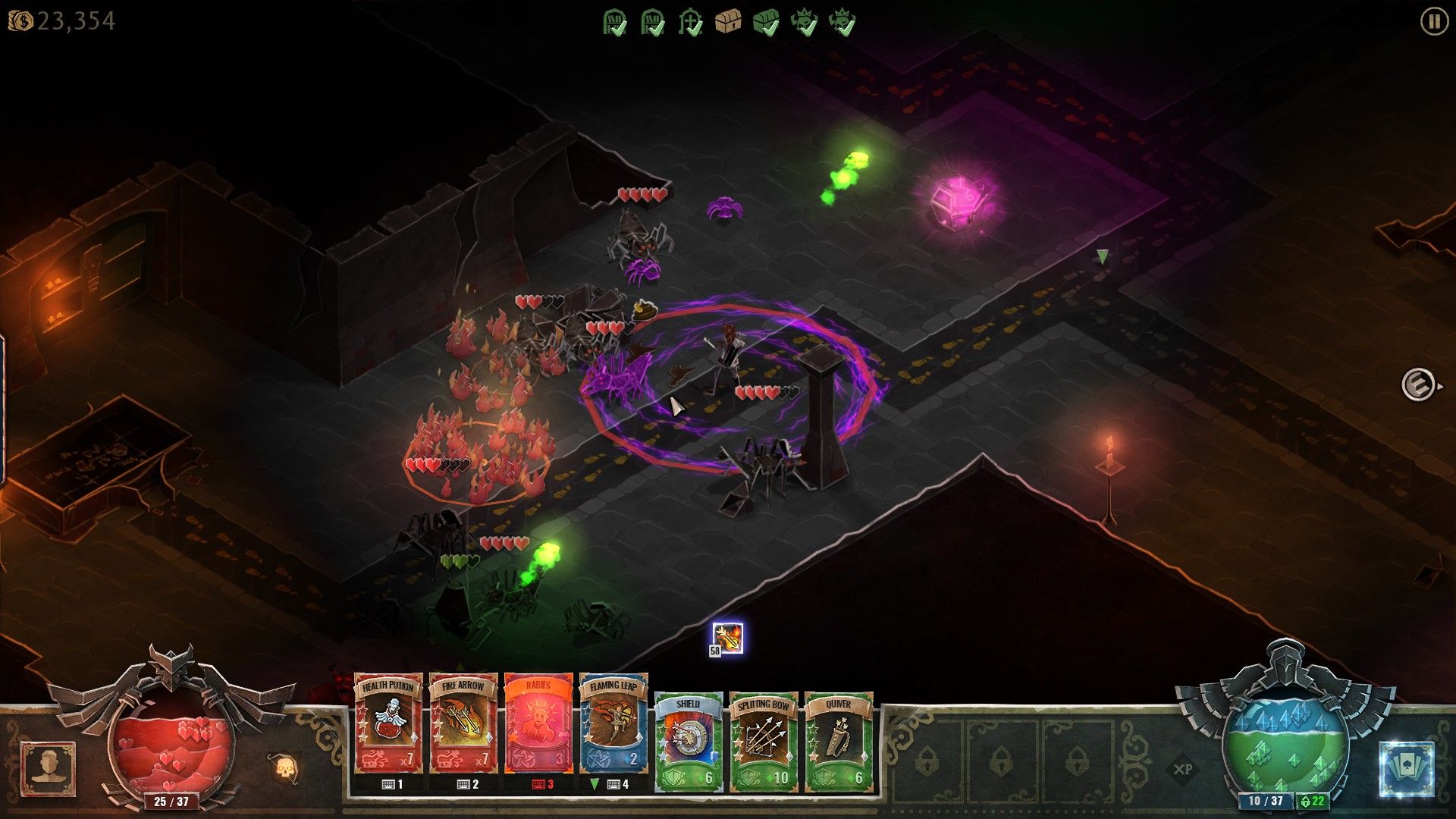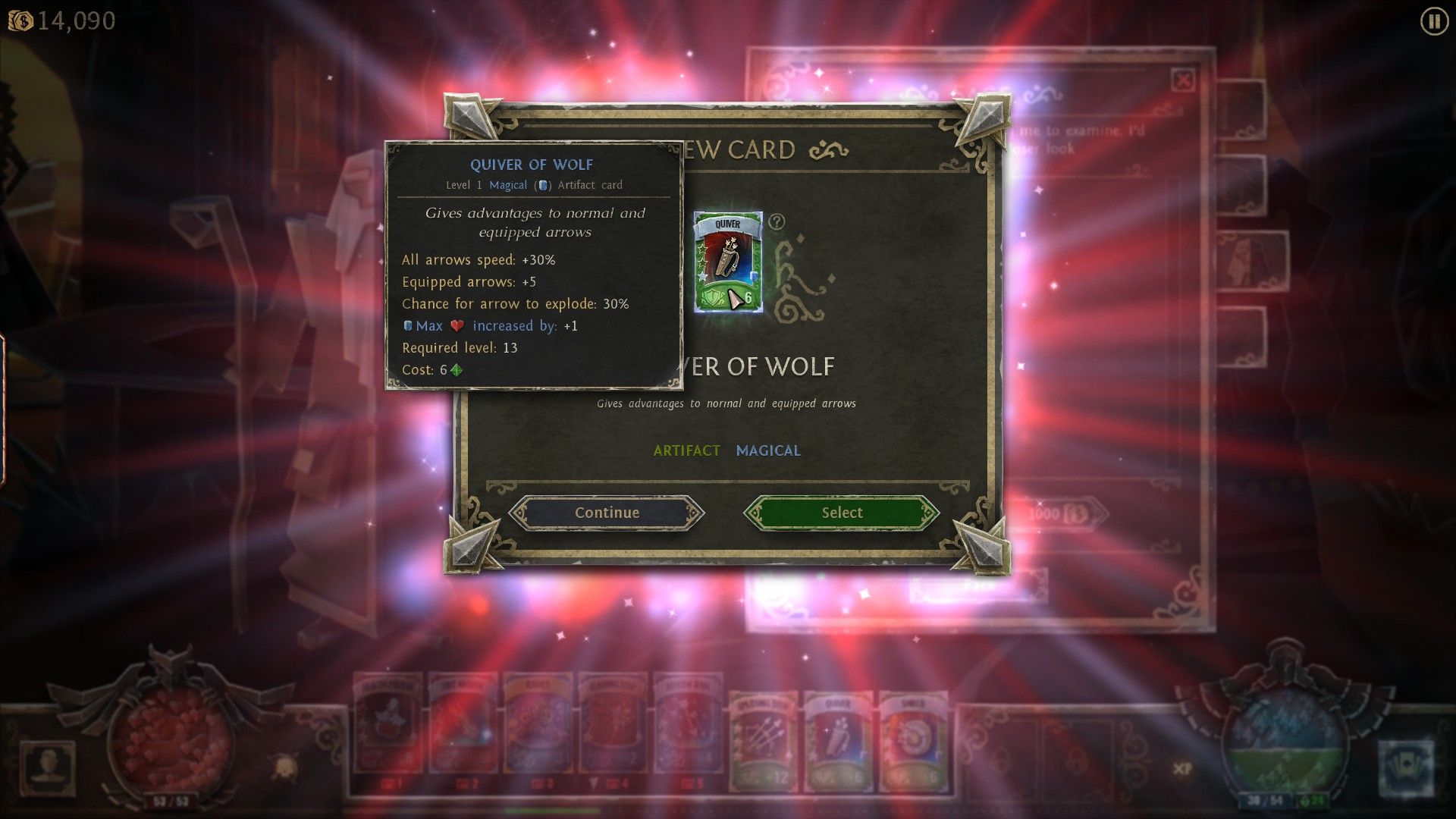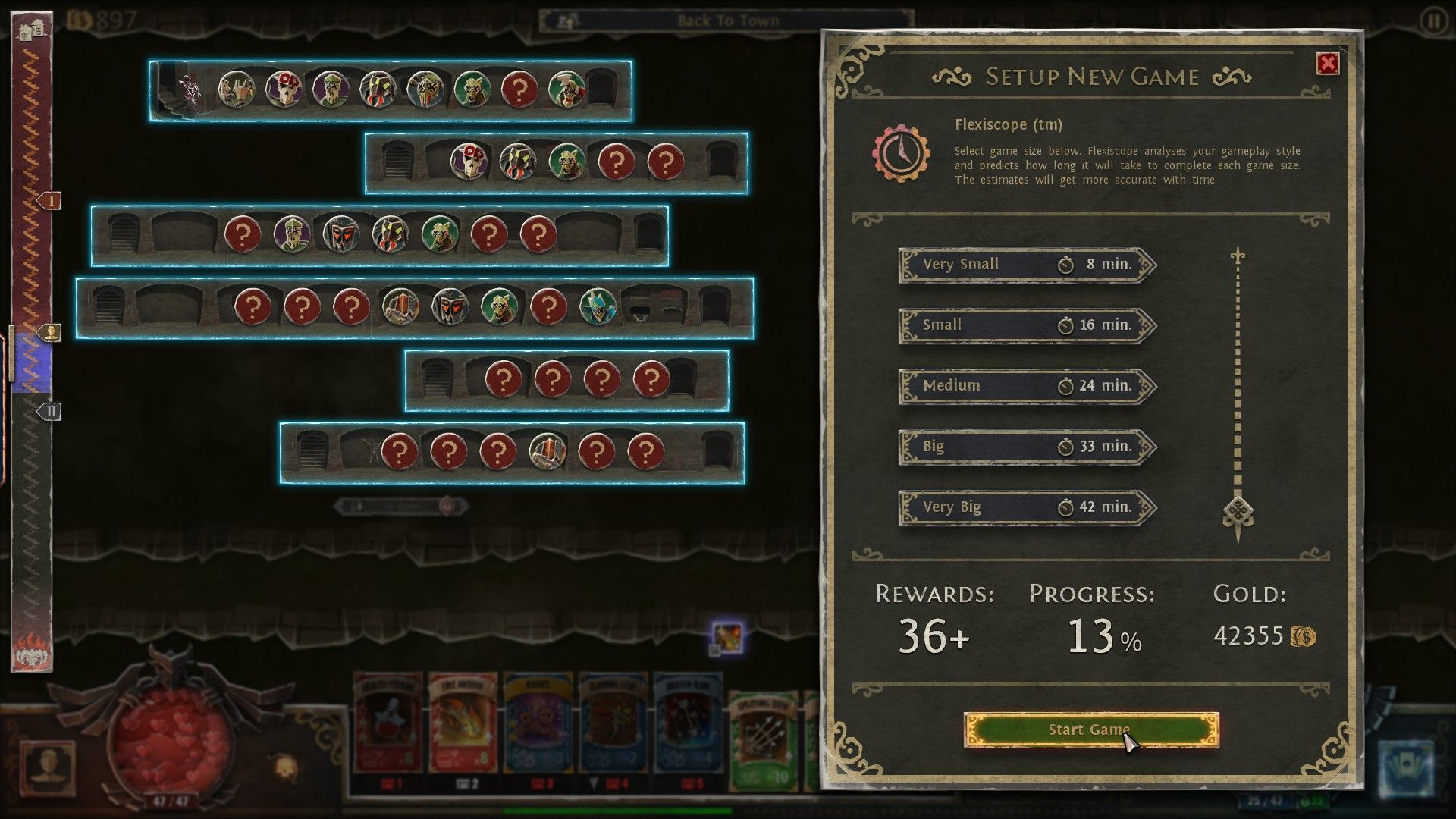
The members of the new Polish games studio Thing Trunk are certainly ambitious, with a full slate of seven (!) “mid-core” titles projected in the coming years. Book of Demons represents the first of these games under the Return 2 Games banner, serving as a kind of hodgepodge of genres and classic gaming inspirations, including a considerable amount of outright Diablo appropriation. The overarching intention here is a game that seeks to respect a player’s time, but it’s hard for Book of Demons to avoid getting overwhelmed in the balance between casual access and actual depth.
The Book of Demons design aesthetic initially feels like a drastic shift from most other games, but you’ll get used to it quickly. There’s a pop-up book quality to the 2-dimensional artwork (heavily referenced in the animated intro as well), with each character and enemy represented as a 2D cutout constructions navigating isometric levels. There’s no way around how strange it looks, with these characters bopping around to and fro as if being moved by invisible hands on a game board, somewhat reminiscent of 2015’s Card Hunter.
Related: Improvements Diablo 4 Needs to Bring to the Franchise
Speaking of Card Hunter, Book of Demons also uses cards, pursuant to its self-proclaimed application of the “deckbuilder” genre. To be frank, the deckbuilding on offer here is minimal to the point of dismissal, with cards in the game existing simply as stand-ins for scrolls and equipment in any other action-RPG. There are three uninspired character classes to choose from – Warrior, Rogue, and Mage – and they all have their own particular card flavors, with some crossover generic selections like Heal Potions and Magic Rings. The rest are class-specific, though not a single one is especially unique, and players equip these cards in an upgradable “hand” that can be swapped around at any time, though this is harder to accomplish when surrounded by enemies.

It’s interesting that Thing Trunk is so upfront about their game’s inspirations and genre affiliations, while being somewhat opaque about Book of Demons’ most galling and pervasive influence: idle/clicker games. For those unfamiliar with the term, clickers are casual-oriented games which are often optimized for mobile phones, and provide a mixture of idle rewards and simplistic incremental mechanics. This usually takes the form of repeated clicking or tapping on a specific part of the screen, or just waiting for something to happen, two aspects which link to the basic combat and game flow in Book of Demons. There’s something about clickers that will feel inescapably distasteful to certain players, while others will find that they enjoy the reduced amount of focus and attention normally required.
So what is there to focus on, here? The player’s goal is to make it through a series of subterranean levels, split up into different sections full of enemy mobs, minibosses, treasure, and 3 chapter bosses (including the Archdemon himself, a kind of cutesy pop-up book version of Diablo’s titular Prime Evil). The player moves through predetermined linear paths in cardinal directions, clicking on the free-range enemies and dodging attacks, projectiles, and area-of-effect spells, while countering with their own skills. Each player character has a basic attack, which can be improved through equipping and swapping certain cards, as well as special card-based skills like arrow barrages for the Rogue and a spinning attack for the Warrior. All of this feeds into the game’s predictable inspirations, though target distance is nebulous and requires some time to get accustomed to, and dodging projectiles while being forced down a linear path of movement is completely clumsy; there will be plenty of times you are simply bopping away backwards through rooms to avoid a single projectile that was specifically fired along your exact path.

All along the way, Book of Demons offers helpful guidance and conveniences in the hopes of stemming player frustration. You can backtrack and leave a level at any time you like, though clearing it out of treasures and enemies offers a one-click-exit option. Instead of tiresome town navigation, the player is deposited into a single screen that allows you to spend gold on unlocks, runic card fusions, and other upgrades. Improved variant cards are dropped at random during regular play, though taking on special challenge runs increases their drop-rate. There’s also a very bare-bones leveling system, offering players an increase in health or mana (which grants both spellpoints for skill cards and equipment points for equipment cards), though these level-ups can also be found as drops on the loot table.
Pushing the player-first philosophy further, the game offers a sliding scale of game size, which can be adjusted after every section of a dungeon is completed. Shorter games offer fewer rewards and gold, longer games offer more, though there exists some invisible balancing algorithm that tweaks drop quality to level out the length options. How this works in practice is hard to intuit, but the game’s early access status has given Thing Trunk considerable time to massage the basic effects of this system for approval.
The problem with pushing such a thoroughly player-guided development path is that Book of Demons rarely comes off as particularly novel or engrossing, and more like a casually-minded game designed to appease as wide a player-base as possible. The challenges presented are primarily centered on stats and gear-checks, and the optional roguelike mode is a mixed bag, especially when certain rooms can all but insta-kill the player on entry (regular modes offer revival options). The cards may look enticing in screenshots, but they come off like placeholders for gear and spells in any other dungeon crawler, rather than some kind of thoughtfully inspired deckbuilding system.

Intentions to release the game on mobile this year feel baked into it from the start, with a few action mechanics that are clearly optimized for fingers instead of mouse pointers. As a clicker/dungeon crawler hybrid, Book of Demons could become a very effective draw on smartphones, but focusing on it during extended PC play-sessions exposes how fundamentally shallow it really is. Playthrough time can vary depending on preferred dungeon size, but most players should be able to see its first ending after about 8 hours, and there are many achievements and advanced runs available to seek out afterward. With a community-first mindset that has stimulated additional mechanics for streaming integration, Book of Demons seems like it has its heart in the right place, but all the bells and whistles still make $24.99 a hard sell for a PC clicker.
More: 11-11 Memories Retold Review: A Hauntingly Beautiful War Story
Book of Demons is available now on Steam for Windows and Mac platforms for $24.99. Screen Rant was provided a digital code for this review.
from ScreenRant - Feed https://ift.tt/2PB5LSq


0 Comments